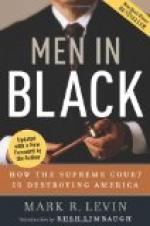The tender morality of the community would not allow a public discussion.
It was said, at the time, that when the representative of a society for the suppression of vice called on one member asking him to introduce the bill, he declined to do so on the ground that he represented a Fifth Avenue District and it would make him too unpopular among his constituents. When the bill had been introduced by another member and came up for final passage, it was decided, since Governor Hughes had vetoed many political bills of members of both houses, to put him in a dilemma. If the bill were presented to him he would have to sign an absurd statute or declare himself the friend of unrighteousness. He signed it and the bill became a law. Since its enactment there have been ridiculously few convictions under it.
The successive carelessness, timidity, and levity of the Legislature is depressing, but there is an encouraging increase of interest on the part of the public. The average man is not merely interested in the problem; he appears to take the sensible view that the “social evil” is not so much a moral question as a condition, a problem to be met like other problems. We have become less concerned with the private morals of our fellow citizens than with their health, safety, and the prevention of unnecessary suffering. We perceive that the courts are only our agents and are not directly responsible for what they do; they are following instructions given by our ancestors and which we have neglected to abolish or modify.
The visitor leaves the Night Court with a strange sense of having his social values overthrown. He feels almost sympathetic with the women whom he has seen. They may be offenders against morals and the social order, but they are human beings over whom the waters of civilization seem to sweep with relentless flood. The frightful waste of life and energy seems inexcusable. And it is as though some mill dam had burst and was flowing in a terrific torrent down a river bed along which a few are drawn white and drowned.
The ordinary man knows that the women who go under are such a small proportion of those who escape, that it seems either a ghastly joke or a terrible tragedy. The whole paraphernalia of the court-room merely accents the contrast between those who are caught and those who go free.
But all criminal courts are always unpleasant. And humanity if seen only in the setting of a criminal trial would be a discouraging object. Turning to the more civil court, we find an almost equal unfitness between the courts and modern conditions.
II
THE CIVIL COURT
In a twenty-four-story office building, on a smooth gliding elevator, up seventeen stories, down a low-ceilinged corridor, past fireproof doors labeled: “Clerk’s Office,” “Judge’s Chambers,” “Witness Room,” we find the typical modern court. The old idea of a very pseudo-classic courthouse on a placid village green to which the neighboring county squires have ridden, and where the jail is in the cellar and the town recorder in the attic, is fast disappearing. The old courthouse in the city, of red sandstone with battlements and turrets, minarets, and a clock tower, seems out of date.




